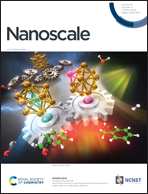Charge transfer in TiO2-based photocatalysis: fundamental mechanisms to material strategies
Abstract
Semiconductor-based photocatalysis has attracted significant interest due to its capacity to directly exploit solar energy and generate solar fuels, including water splitting, CO2 reduction, pollutant degradation, and bacterial inactivation. However, achieving the maximum efficiency in photocatalytic processes remains a challenge owing to the speedy recombination of electron–hole pairs and the limited use of light. Therefore, significant endeavours have been devoted to addressing these issues. Specifically, well-designed heterojunction photocatalysts have been demonstrated to exhibit enhanced photocatalytic activity through the physical distancing of electron–hole pairs generated during the photocatalytic process. In this review, we provide a systematic discussion ranging from fundamental mechanisms to material strategies, focusing on TiO2-based heterojunction photocatalysts. Current efforts are focused on developing heterojunction photocatalysts based on TiO2 for a variety of photocatalytic applications, and these projects are explained and assessed. Finally, we offer a concise summary of the main insights and challenges in the utilization of TiO2-based heterojunction photocatalysts for photocatalysis. We expect that this review will serve as a valuable resource to improve the efficiency of TiO2-based heterojunctions for energy generation and environmental remediation.

- This article is part of the themed collection: Recent Review Articles


 Please wait while we load your content...
Please wait while we load your content...